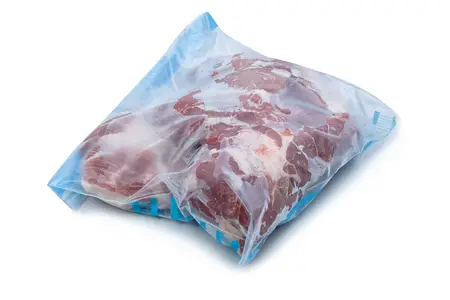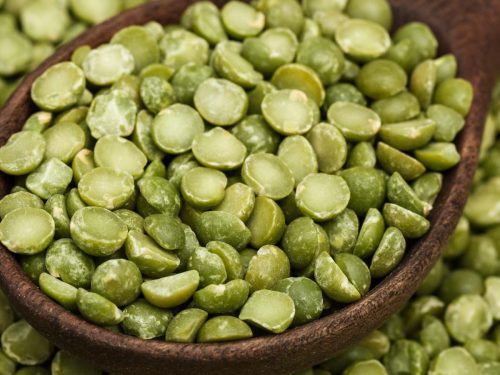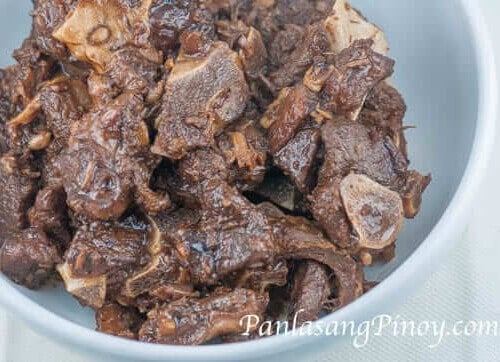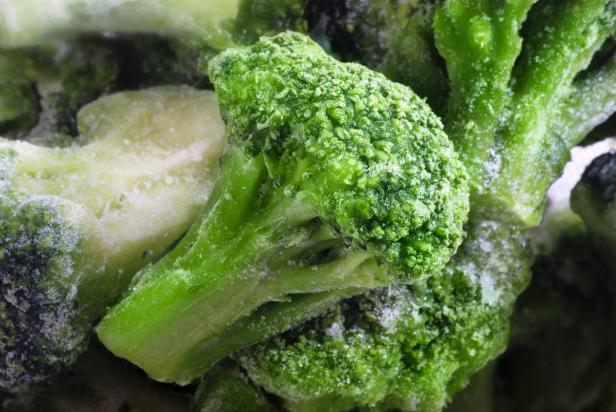Is It Better to Freeze Raw or Cooked Beef?
Freezing beef might seem like a straightforward task, but there is more to it than just tossing the meat into the freezer. There are two ways to freeze beef – raw and cooked, and each method has its advantages and disadvantages. Knowing which way to choose can help preserve the meat’s quality, flavor, and nutritional value.
Introduction
Beef is one of the most popular meats in the world, and it is a staple ingredient in many cuisines. However, sometimes we end up with more beef than we can consume or are not ready to cook yet. In such instances, freezing beef comes in handy as a way of preserving the meat for later use.
When done correctly, freezing beef can keep it fresh for an extended period without compromising its taste, texture, or nutritional value. In this article, we will explore whether it’s better to freeze raw or cooked beef. We’ll also provide tips on proper storage techniques to ensure your beef is safe and ready when you need it.
Freezing Raw Beef
Freezing raw beef refers to packing cuts of uncooked meat and placing them in the freezer. This method is ideal when you have newly purchased meat from a butcher or grocery store or have leftovers from a meal that you didn’t cook.
Advantages of Freezing Raw Beef
- Better preservation of nutrients: Raw beef contains more vitamins and minerals than cooked beef since heat destroys some of these nutrients during cooking. Freezing raw meat ensures that these essential nutrients are preserved until they’re ready to be cooked.
- Better retention of flavor: Raw beef has a distinct flavor that might be lost when cooked. With freezing raw meat, this flavor is preserved as it is, allowing for a more flavorful result when cooked.
- The meat’s texture is better maintained: Freezing raw beef preserves the meat’s texture since freezing can cause changes to meat protein once it’s been cooked. Raw beef doesn’t face the same challenge, and as such, it retains the same texture even after thawing.
How to Properly Prepare Raw Beef for Freezing
To ensure that your raw beef stays fresh and safe, follow these steps:
- Trimming excess fat: Excess fat in meat can affect the quality and taste of frozen meat. Trim any visible fat from the meat before freezing.
- Wrapping and storing the beef: Use either a freezer bag or wrap the meat tightly in aluminum foil or plastic wrap to prevent freezer burn. Label each package with what type of cut of beef, date packaged, and how many pounds to help stay organized in your freezer when you are searching for a specific cut of beef.
Recommended Storage Time for Different Cuts of Raw Beef
The following table outlines how long you can store different cuts of raw beef in the freezer:
| Type of Cut | Freezer Storage Time (in months) |
|---|---|
| Ground Beef (any lean point) | 3-4 months |
| Rib Roast, Steak (Strip), & Tenderloin | 6-12 months |
| Sirloin Steak | 4-6 months |
| Beef Roast & Steaks (Chuck, Shank, Short Ribs) | 4-6 months |
Freezing Cooked Beef
Freezing cooked beef refers to preparing and cooking the meat before placing it in the freezer. This method is ideal for meal prepping or when there are leftovers from a recipe.
Advantages and Disadvantages of Freezing Cooked Beef
- Advantages of Freezing Cooked Beef:
- Convenient: Cooked beef already has the bulk of its preparation done, making freezing that much easier.
- Saves time: Cooking beef meals can take up a considerable amount of time and effort; freezing cooked beef saves you time when reheating it for your next meal.
- Easier thawing: Cooked beef can thaw faster than raw beef.
- Disadvantages of Freezing Cooked Beef:
- The texture can change after freezing: Depending on how you freeze it, cooked beef might have a different texture once it’s revived.
- Cooked meat loses some of its moisture during freezing, which can compromise its taste and tenderness.
- Cooked meat’s nutritional value decreases slightly during cooking. The process extracts certain nutrients such as vitamin B, which diminishes as the cooked meat sits in the freezer.
- Cooling the beef before freezing: For food safety reasons, allow the cooked meat to cool before putting it in your freezer. Cooked beef can spoil faster if not cooled correctly prior to freezing.
- Portioning and wrapping the beef: When portioning out the beef for freezing, package it so that there is minimal air inside. Use airtight containers or freezer bags, removing as much air as possible before sealing each package.
- Fridge: This method involves placing the frozen meat in a leak-proof container on the bottom shelf of the refrigerator and allowing it to slowly thaw. Allow at least 24 hours per five pounds of weight for complete defrosting.
- Water: Depending on how much meat is being thawed, place it in a ziplock baggie or vacuum-sealed bag and submerge it in cold water. Make sure to change the water every 30 minutes until fully defrosted.
- Microwave: Use your microwave’s defrost setting only if you follow the manufacturer’s instructions for safely defrosting raw or cooked meat. If not done correctly, microwaving meat can lead to uneven defrosting.
- Raw Beef: The best way to thaw raw beef is in the refrigerator as it helps maintain its quality better than the other methods. If you’re in a hurry, soaking it in cold water will do the trick, but it’s essential to keep an eye on the meat to avoid it becoming too warm or partially unthawed.
- Cooked Beef: When thawing cooked beef, use your fridge or microwave to avoid overcooking the meat. Reheating cooked beef to a high temperature can lead to dryness and loss of its nutritional value, so take care when reheating.
- Avoid thawing at room temperature: Leaving raw meat out on a counter at room temperature can lead to bacterial growth. Avoid this by always thawing meat in the refrigerator, microwave, or under cold running water.
- Prevent leaks and cross-contamination: Keep your meat in tightly sealed containers during defrosting and ensure that any juices don’t leak onto other foods that may come in contact with your beef.
- Cook meat immediately after defrosting: Never refreeze previously frozen raw meat after it has been fully thawed. Refreezing already defrosted meats increases the risk of bacteria growth, which poses a health hazard.
- Advantages and Disadvantages of Cooking Frozen Raw Beef:
- Pros: This method of cooking is time-saving, as it doesn’t require you to wait for the meat to thaw completely.
- Cons: Cooking beef that hasn’t thawed entirely might result in uneven cooking and could leave the inside of the beef partially uncooked, leading to foodborne illnesses. It could also affect the meat’s texture negatively.
- Safety Tips for Cooking Frozen Raw Meat:
- Preheat your oven, grill, or stovetop before placing frozen raw meat in it. This step ensures that the meat cooks evenly throughout.
- Increase cooking time by about 50% compared to meats that are not frozen.
- Pierce the thickest part of the beef with a meat thermometer regularly. Ensure that it has reached an internal temperature of at least 145 degrees Fahrenheit for safety reasons.
- Using a microwave: Place your cooked frozen beef in a microwave-safe container and heat it on defrost mode for a few minutes, then on high power until it reaches your desired temperature.
- Oven method: Preheat your oven to 350-degree F. Then bake your cooked frozen meat in a covered baking pan for roughly 30 minutes, depending on the type and cut of meat.
- Dos and Don’ts when freezing beef
- Don’t freeze meat that has already been frozen and defrosted once – this increases the risk of bacterial growth and spoilage.
- Do label your packages with the type of meat, date packaged, and quantity.
- Do ensure that your freezer bags or containers are airtight.
- Don’t forget to eliminate excess air in freezer bags that increase the risk of freezer burn.
- Mistakes when packaging or storing frozen meat:
- Failing to remove air before sealing bags or containers can result in freezer burn.
- Putting warm beef straight into the freezer – this will not only raise your freezer’s temperature, but also increase the risk of bacteria building up.
- Packing too much beef at once – excess volumes can hinder proper freezing, which could cause bacterial growth during storage.
- The type and cut of meat: Some cuts of beef have a longer shelf life than others, depending on their fat content and other variables.
- Temperature fluctuations during storage:Frozen beef requires consistent temperatures to maintain its quality and freshness. Fluctuations or thaw-and-refreeze cycles can compromise the meat’s quality.
Proper Ways to Freeze Cooked Beef
To ensure that your cooked beef stays fresh and safe for consumption, follow these steps:
Recommended Storage Time for Cooked Beef
The following table outlines how long you can store different types of cooked beef in your freezer:
| Type of Dish | Freezer Storage Time (in months) |
|---|---|
| Cooked Ground Beef | 2-3 months |
| Cooked Beef Roast or Steak | 2-3 months |
| Cooked Beef Casserole or Stew | 2-3 months |
Comparison between Freezing Raw and Cooked Beef
Nutritional Value Comparison
Raw beef has the upper hand when nutritional value is considered since it doesn’t lose any nutrients during cooking. However, cooked beef still retains a lot of its nutrients and is typically more flavorful than raw beef due to the cooking process. Ultimately, both methods have their pros and cons when it comes to nutritional value.
Texture and Taste Comparison
The texture and taste of frozen raw beef remain unchanged when thawed and cooked. In contrast, the texture and taste of cooked beef can change slightly during freezing and thawing. Raw beef keeps its flavor profile throughout the freezing and cooking process, while cooked beef’s flavors might change due to the added spices or sauces used to prepare it.
Time-Saving Comparison
Cooked beef saves you cooking time when you need a meal in a hurry, while raw beef needs more preparation time before cooking. However, thawing frozen raw meat can take longer than thawing frozen cooked beef.
Thawing Frozen Beef
Avoid leaving frozen beef sitting on your counter to thaw out, as this will increase the risk of bacterial growth that leads to food poisoning. Instead, thaw your frozen beef in one of these ways:
Best Method for Each Type of Frozen Beef (Raw, Cooked)
Precautions and Safety Measures to Take During Thawing
Cooking Frozen Beef
Sometimes you may find yourself with frozen beef that you want to cook immediately without waiting for defrosting time; here’s how:
How and When To Cook Frozen Raw Beef
The most convenient way to prepare frozen raw beef is by cooking it directly from its frozen state. However, this technique can create food safety issues if not done correctly. Here are some tips to consider:
How to Properly Reheat Cooked Frozen Beef
To reheat your frozen cooked beef without compromising its taste or texture, follow these steps:
Tips for Properly Freezing Beef
To make sure you’re freezing beef correctly, use these tips:
Common Mistakes When Freezing Beef
Incorrect storage techniques are the biggest contributor to beef spoiling. Here are some mistakes to avoid:
Shelf Life of Frozen Beef
The shelf life of frozen beef depends on a few factors such as the type of cut and how well it’s stored. Freezer temperatures also play an important role in determining how long you can store beef before it loses quality or becomes unhealthy for consumption. The table below provides guidelines on how long you should store different types of beef:
| Type of Cut | Freezer Storage Time (in months) |
|---|---|
| Fresh Beef (Uncooked) | 6-12 months |
| Cooked Beef | 2-3 months |
Factors that Affect the Shelf Life of Frozen Beef
The following factors influence how long you can store beef in your freezer:
Recommendations for Safe Consumption
It is vital to practice safe food handling when cooking with frozen beef to avoid bacteria growth which could cause food poisoning. Before cooking, always ensure that your freezer settings are correct, and that your beef wasn’t thawed or refrozen incorrectly. Whenever possible, ensure that you purchase high-quality beef from reputable sources.
Conclusion
Freezing your beef is an excellent way to save money, avoid unnecessary waste and make meal planning even easier. When done correctly,
What are the benefits of freezing raw beef?
Freezing raw beef can help preserve its quality and flavor. By freezing it, you can extend the shelf life for several months, making it a convenient option for meal planning. This is especially useful if you have a busy lifestyle and need to save time preparing meals.
How does freezing cooked beef differ from raw beef?
Freezing cooked beef is different from raw beef since it has already undergone the cooking process. While it’s still possible to freeze cooked beef, it’s important to keep in mind that the texture and taste can be affected by the freezing process. Cooked beef may also dry out more easily when frozen.
How long can you freeze raw or cooked beef?
You can freeze raw or cooked beef for up to six months in your freezer. However, the quality may start to deteriorate after a few months, which can affect its taste and texture. To ensure the best quality, always use an airtight container or freezer bag, label it with the date, and store it in a consistent temperature.
Does it matter what cut of beef I freeze?
The cut of beef that you choose to freeze is important since different cuts have varying fat content, muscle structure, and other factors that can affect how well they hold up when frozen. Generally speaking, leaner cuts of meat like sirloin and flank steak hold up better than fattier cuts like brisket or ribeye when frozen. Consider your intended use for the meat – will it be braised or grilled? – when choosing what to put in your freezer.






